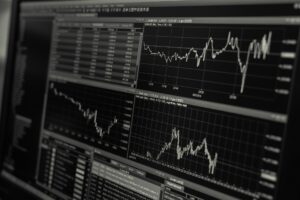Sveriges økonomi bryder sammen i år. Nordea har lavet tre scenarier med en minusvækst på mellem 2 og 8 pct. for hele året.
Uddrag fra Nordea:
Sweden Macro: On the edge of a cliff
The Swedish economy seems to be coming to an abrupt halt in a way never seen before. The labour market is deteriorating swiftly. There is fundamental uncertainty. We illustrate various scenarios of the potential course of the Swedish economy.
See the Swedish version of this report here.
The economy almost in free fall
These are extreme times. The coronavirus has an iron grip on society. From a macroeconomic viewpoint, the analysis is actually quite simple. Everything is shutting down.
Before the coronavirus outbreak, that is, up to and including February, the recovery in Sweden and other countries was stronger than we and many others had expected. Now that’s history. GDP probably declined during the first quarter of the year as economic activity fell in March, but for the quarter as a whole the deceleration was probably moderate.
In the second quarter the plunge in GDP is most likely the largest ever recorded for one quarter in modern times. During the autumn of 2008 when the financial crisis broke out, GDP fell by no more than 4% on a quarterly basis. The decline in the second quarter this year looks set to be much worse if the measures taken to curb the spread of the virus are maintained in Sweden and in other countries. The GDP decline could be so drastic that it can be difficult to calculate for Statistics Sweden.
The clock is ticking – three different scenarios
The economy has been hit by an external shock. Households are encouraged to stay at home and demand is disappearing. Uncertainty is casting a wet blanket over the world’s economies. For the industrial sector there were initially worries about the supply of input materials. These problems have become real at the same time as uncertainty over global demand is growing. Several industries in Sweden and Europe have closed down.
Before the virus crisis, there were question marks over household debt levels, but by and large households and businesses were financially robust before the coronavirus spread all over the world. The financial sector was, and is, stable. In other words, liquidity was available in the economy and it was not imbalances that lead to the crisis.
It is thus important to cushion the negative economic effects and try to weather the epidemic. This is done by supporting the business sector to ensure that as few businesses as possible go bankrupt. Measures are also taken to prevent unemployment from rising too fast. This will reduce the risk of long-term and negative effects and the financial system can remain stable.
Time is of the essence. The expected plunge in GDP near term is serious, but has fewer long-term consequences if activity in the economy returns quickly. But the longer the virus has a grip on society, the more serious the damage to the economy and the risks of a very serious scenario will increase.
Today there is fundamental uncertainty about how long the virus epidemic will last and for how long measures are required with whole countries quarantined and strong social distancing. Both the measures and the spread of the virus have directly affected economic performance.
In three different scenarios we illustrate potential courses for the Swedish economy. Scenario 1 assumes that the coronavirus is contained relatively soon by the measures taken so far. Economic activity starts to improve as early as in the third quarter and continues at a good pace.
In scenario 2, it is more difficult to combat the virus. Demand remains weak for a long time and there are many bankruptcies. The negative consequences for the economy in general and the labour market in particular will be significant. It will take until 2021 for the economy to gradually recover.
In scenario 3, it takes even longer to combat the virus. The effects on the labour market and the economy will be considerable and will lead to a decline in home prices. Also the financial system will be under significant stress. There is no recovery in this scenario, leading to a very difficult economic situation.
In all three scenarios GDP measured as an average of the full year 2020 will fall from around -2% in scenario 1 to -8% in scenario 3. Scenario 2 implies GDP at around -4.5% for 2020 and +2% for 2021. In scenario 3, GDP will be around 10% lower by the end of 2021 compared to Q4 2019. We want to emphasise that the scenarios are schematic and that there is a wide range of potential outcomes.
The labour market was already fragile
Even though there were signs of an economic recovery before the virus outbreak, the labour market was weakened. The number of hours worked had dropped and employment growth was subdued – a sign that many businesses were already retaining staff when the coronavirus hit. This means that the threshold for dismissing employees is low.
According to the Public Employment Services’ new weekly figures, 36 800 workers were given notice between up until and including March 29, higher than any other month on record. It is likely that the number of redundancy notices in the coming month may exceed the levels during the financial crisis when 100,000 persons were given notice between October 2008 and March 2009. Unemployment is increasing sharply in all scenarios and in the third scenario unemployment continues to increase also in 2021.
The government has introduced measures so that businesses can keep their employees and in some sectors both short-time work and temporary layoffs are attractive. But for others, it is easier to find new staff and less attractive to retain staff – which seems to be the case for hotels and restaurants. Even though hotels and restaurants account for a small share of GDP, it accounts for almost 5% of employment and is an important point of entry to the labour market.
There is a clear risk that a considerable part of those who risk losing their jobs in the coming months are people with relatively weak ties to the labour market, people who are not covered by the social security system and who will end up getting allowances from the municipalities. Integration will deteriorate and if scenario 3 becomes reality, it will lead to huge problems with exclusion in the coming years.
The pay talks which should have been concluded by the end of March is postponed until the fall. Consequently, the current agreement will be extended and the pace of wage growth will likely remain at around 2% per year.
Powerful measures and probably more to come
Economic policy cannot prevent the economy from shutting down in the short term. But it can mitigate the negative impacts. The measures the government, the Riksbank and the Swedish Financial Supervisory Authority have introduced are powerful. Their primary purpose is to strengthen the liquidity of businesses and support particularly vulnerable industries in order to limit the number of bankruptcies and curb rising unemployment.
We expect that further measures will be presented. It may become relevant for the government to support the business sector further in various ways, for example by taking over all wage costs associated with layoffs. Moreover, we also expect that municipalities and regions will get more resources. If the health care sector was strengthened significantly, the time and the extent to which society and the economy are impacted could be reduced.
Government debt will grow rapidly due to costs for support measures and lower income.







